1918: San Diego Feels Global Health Crisis
A sneeze at a military facility near Junction City, Kansas, turned into a cold that led to a fever that led to a death that led to a global pandemic.
The so-called “Spanish Flu”, which is said to have first struck World War I soldiers processing in and out of Camp Funston on the Fort Riley army reservation in March, reached almost every corner of the earth.
Including the growing city on the California-Mexico border.
San Diego and the surrounding communities didn’t feel the virus’ effect for months. Not until September, after school opened and football practice started.
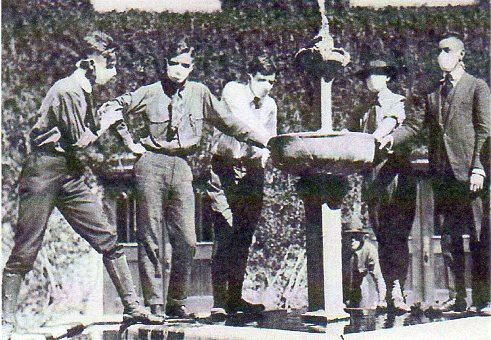
Four months later, when the bug finally was arrested, the flu had hit with force: A reported 5,040 cases and 366 deaths locally, according to an article by Peter Rowe of The San Diego Union in 2009.
The number of documented illnesses represented about 7 per cent of the city’s approximately 75,000 citizens. Taken in 2018, 7 per cent would be almost 100,000 of San Diego’s 1.3 million inhabitants.
Probably 100 million persons around the world were incapacitated or died. The death toll has been variously estimated at from 50 to 70 million, the latter figure at least 3 per cent of the earth’s 1.8 billion population.
SUMMER DILEMMA
School began on August 26 at San Diego High and new coach Clint Evans, fresh from Pomona High, was in a quandary.
Evans was unsure about which veteran players from the 1917 squad would be returning to school, as some had “left for the colors,” with others expected to follow.
The 1918 schedule had not been formulated. No team manager had been hired, as Gustave Harding, appointed last year, had left for the military.
Evans planned to book one or two northern squads and fill the rest of the schedule with service teams, of which there were many in the area.
The coach hoped to start practice on Aug. 28, but there would be no practice until an arrangement was made with the Balboa Park board to use the City Stadium field.
Seventy-five candidates turned out for the first practice, held on the girls’ indoor baseball field.
UNCLE SAM CALLS
The United States declared war on Germany and officially entered World War I on April 6, 1917. Gustave Harding, captain of the 1918 squad, along with classmates and teammates at least 18 years of age, eventually answered the call.
Harding enrolled at Oregon Agricultural College (future Oregon State) for military training. Others entered Redlands University. Still others affiliated with local branches of the military.
The government had established military programs at colleges throughout the U.S. Harding and others were able to return to school after the war ended on Nov. 11, 1918.
WEIGHTY ISSUES
Evans expected his first varsity to be lighter than previous Hilltoppers clubs. Older, heavier players apparently had departed for the military.
“This team is so light, but we’re going to make it so fast that nothing in the South will pass us,” said Evans.
SLOW REALIZATION
A couple weeks after the start of school a San Diego Sun article, giving passing acknowledgement to rising statistics on the East Coast and in Europe, declared mildly, “San Diego is full of colds, just now.”
The Sun had advice and promised all of the facts “about Spanish Flu” for its readers but in the form of a paid advertisement, according to a 2009 article in The San Diego Reader:
–To avoid infection: “Steer clear of secretions of the nose and throat passages, conveyed on handkerchiefs, towels and mess-gear.”
–If you come down with the flu, “treat it as a bad cold…be sure to take Dover’s Powders.”
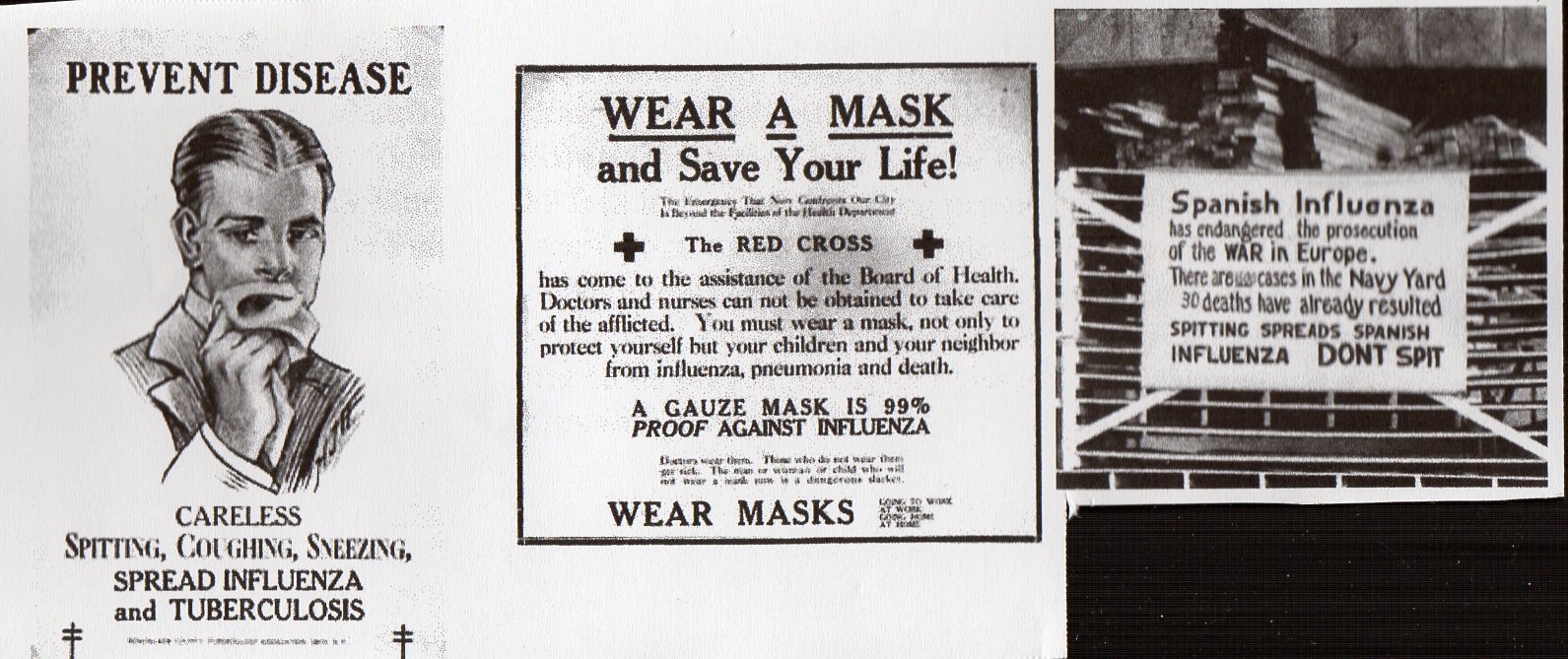
Around this time sailors at the Balboa Park naval training camp and soldiers at Camp Kearny were coming down. By October, the bases at Balboa Park, Camp Kearny, Fort Rosecrans, and North Island were under quarantine.
SO FAR, SO GOOD
Evans, a University of California graduate, had the Hilltoppers unbeaten after 3 games.
They played to a scoreless tie with the La Playa Navy, defeated Coronado, 19-7, and Los Angeles High, 14-0.
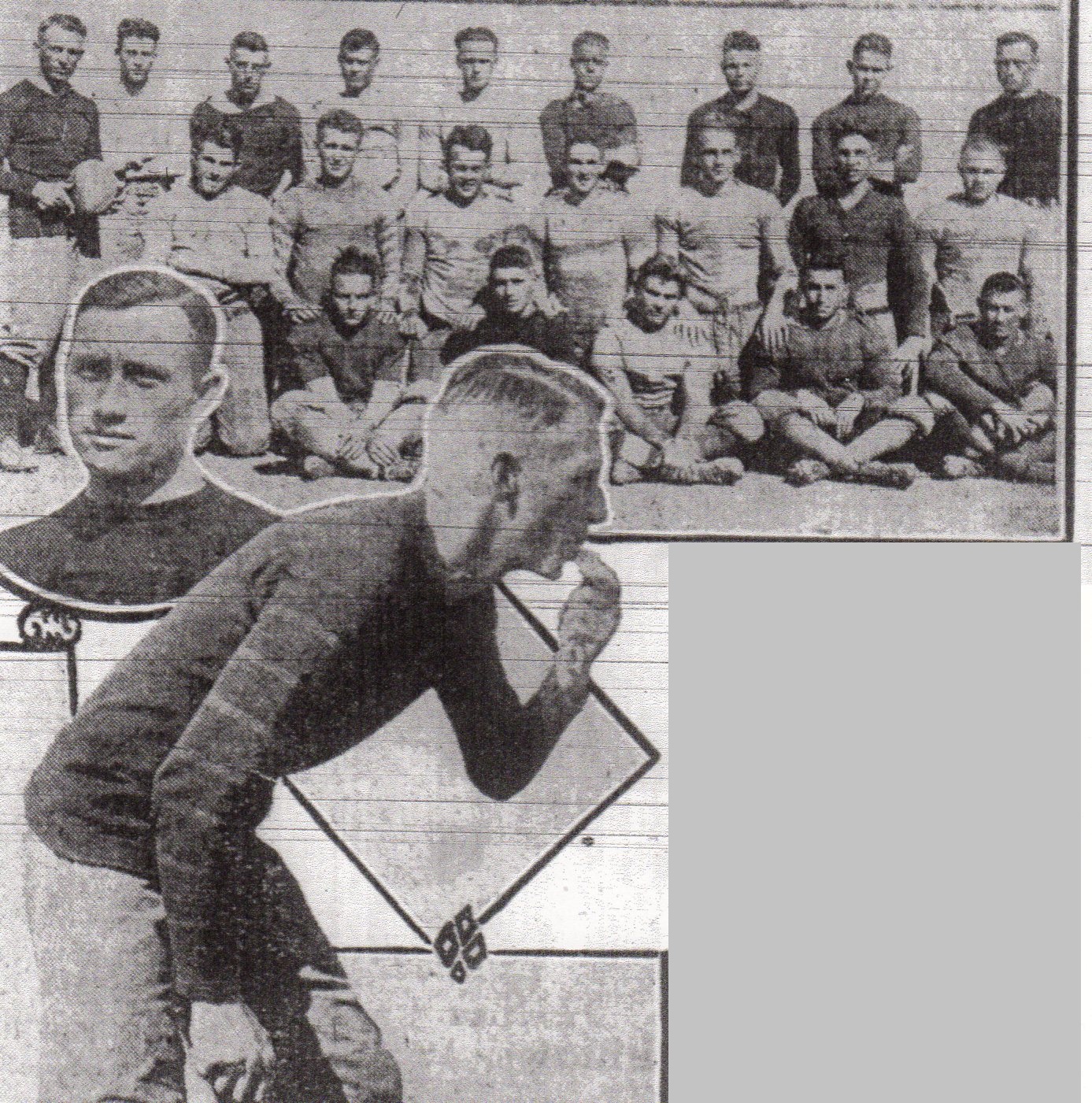
Not uncommon to the era was the response of the L.A. High captain, as Don King noted in Caver Conquest.
The miffed Roman tried to convince his team to walk off the field in protest of some officiating calls that favored the Hilltoppers.
Meantime, Coronado was said to “have a great liking for piling up points this season,” after the Islanders took National City to the shed, 61-0, following a 53-0 victory over Army-Navy in County League contests.
The schedules of San Diego, Coronado, Army-Navy, Escondido, and National City soon were suspended.
SHUTDOWN
As the flu rampaged throughout the country, San Diego education bosses decided to close all schools on Oct. 13. They did not reopen until Jan. 6, 1919.
Initial reaction was that teams would continue to practice until reopening.
The days turned into weeks, the weeks into months.
Evans attended a meeting in Los Angeles on Nov 4. Opinion of Northern coaches was that practice would begin around Nov. 30, allowing for games on Christmas Day and New Year’s Day.
The San Diego public health board adopted a resolution on Nov. 9, saying a quarantine on public entertainments and gatherings would be lifted at midnight on Nov. 17.
Opinion of the four-man board was that the “epidemic had materially subsided and is in control.” Twenty-two new cases had been reported the day before.
On Nov. 15 the quarantine was rumored to be extended after an outbreak on successive days of 57 and 66 cases and one death raised new alarms.
OOPS?
Quarantine confusion came to the surface.
San Diego vaudeville, stock and motion picture theaters, pool and billiards parlors remained open in defiance of the quarantine, with the health board hopeless to enforce its edict, said the Union.
No quarantine officially existed, according to the city attorney. The health board had omitted making its order a matter of record at a formal meeting.
The health board then made it official, adding churches, dance halls, public bathing establishments, and other gathering places.
AHEAD OF THE PACK
On Dec. 3, Evans, himself having recovered from a set-to with the flu, reported that Northern schools on the Orange League schedule would begin play on Jan. 1.
Evans scheduled Los Angeles Poly for a New Year’s Day nonleague game at City Stadium. The Hilltoppers won, 13-6, to go to 3-0-1.
Some Southern California school bosses wanted to scrub the season, according to a Dec. 4 Los Angeles Times story.
The bosses noted that the season would run into the rainy months and any schedule could not be depended on to be played out.
However, as would be the case a century later “Football is considered the paying athletic proposition of the year and the loss of the gate receipts would have to be made up in some other way to carry on the basketball, track, and baseball programme (sic).”
The season would be salvaged, no matter how late into the spring.
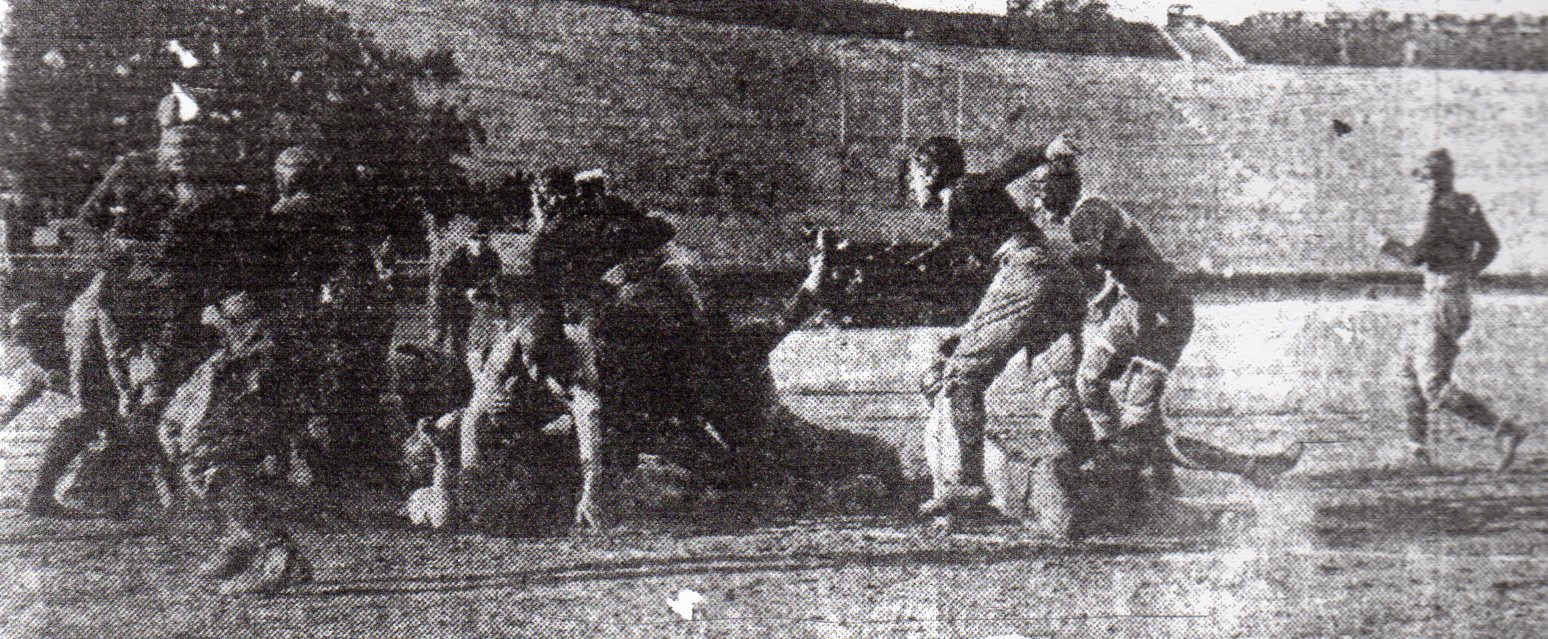
SCHEDULING MISMASH
Daily reports in January indicated the CIF was trying to create a path to the playoffs, hopefully salvaging some flu-related loss of revenue.
The path was strewn with detours and obstacles.
–San Diego had lost to Pomona, 10-7, before a 13-6 victory over Fullerton and was scheduled to play league opponent Orange.
–Orange decided to turn in its gear, effectively forfeiting to San Diego.
— San Diego now would play the winner of a Pomona-Fullerton game for the Orange League championship.
–Fullerton defeated Pomona, 13-10, creating a three-way tie for the title, each team with a 2-1 record.
–A decision then was made that San Diego and Pomona would play for the right to host Fullerton.
–Pomona bailed, ending its season.
–With Pomona out, Fullerton changed its mind about being the visitor against San Diego and demanded that the rematch be played at a site of its choosing.
–Evans and Fullerton coach Culp attended a protest meeting at Fullerton, where representatives from other schools heard arguments.
–The protest committee sided with Evans.
–Fullerton made the trip South and turned the tables on San Diego, 20-13, winning the league title and a berth in the playoffs.
–San Diego’s season was over. So was Clint Evans’ tenure as coach.
ISLANDERS IN PURSUIT
Coronado meanwhile also was in the playoffs and defeated visiting Redlands, 14-7, as “Ed Suggett passed, ran, blocked, and punted” the Islanders to victory.
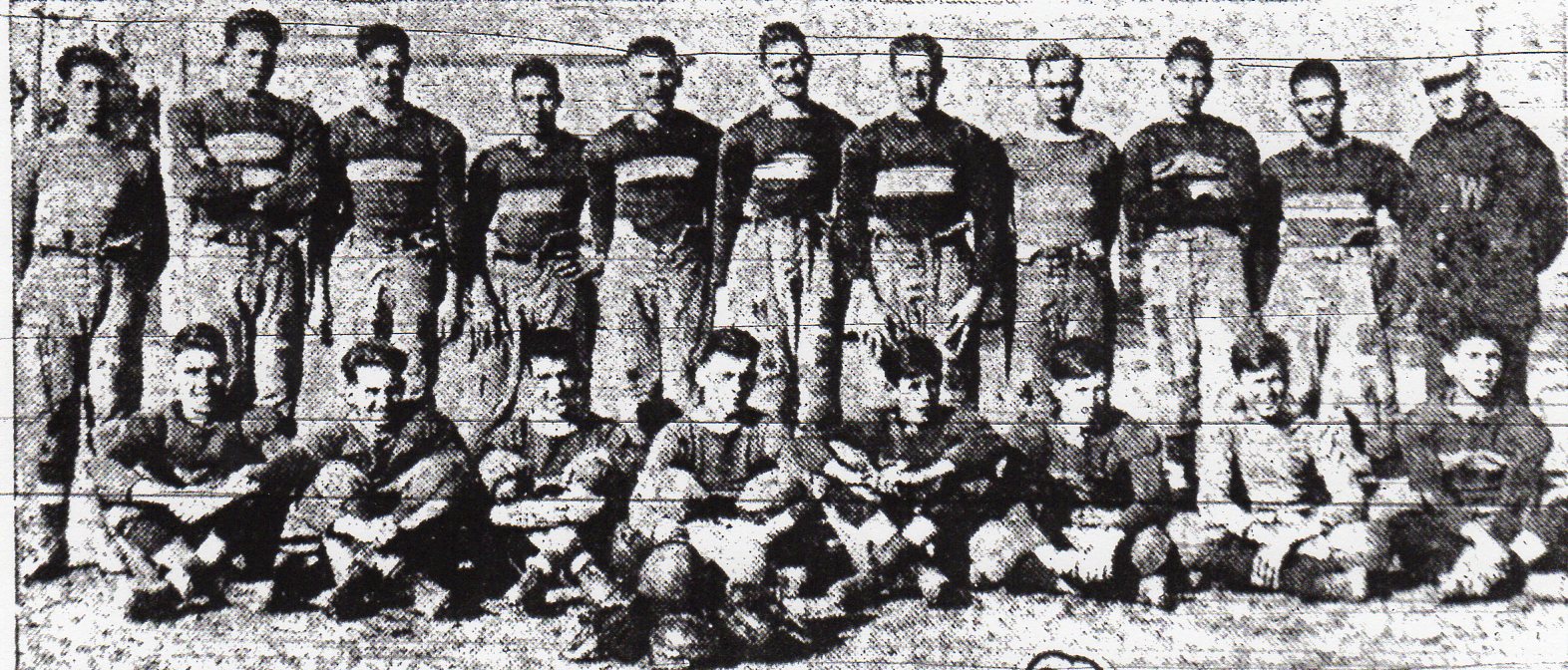
Fullerton advanced to the championship game against Coronado with a 60-0 win over Santa Monica.
The Islanders and Fullerton met a month later, on March 18, almost 90 days after the season’s normal conclusion.
With the addition of Suggett, who had played on Jan. 1 for the Balboa Park Sailors against the Mare Island Marines of Vallejo for the West Coast military title, Coronado liked its chances.
Fullerton, which remained active and played through the flu epidemic, capped a 10-1 season, by blanking the 5-3 Islanders, 18-0.
The season had finally come to an end.
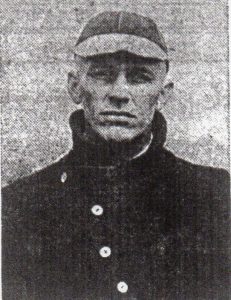
COACH TO TILL EARTH
Saying he could not turn down the opportunity to partner with his brother in a farming business in Idaho, Clint Evans resigned his position at San Diego and said he was retiring from football.
“I have an attractive farming proposition, one which I believe will return me more finances and be more lasting than coaching,” said Evans.
Evens eventually returned to Berkeley and coached the California Golden Bears’ baseball team from 1930-54.
SAY, AREN’T YOU…?
San Diego players must have blinked when they looked across the line at a familiar face on the La Playa Navy team. Howard Morrison, former yell leader for Hilltop cheering sections, played for the military base squad in the 0-0 tie that began the season.
LET’S RALLY
Elated at the prospect of playing again, 21 coed volunteers canvassed the entire downtown district selling tickets to the New Year’s Day contest against L.A. Poly.
Hilltoppers students added to the festive atmosphere with a serpentine that began at the courthouse on lower Broadway, headed east to Fifth Avenue, north to C Street, West to Fourth Avenue, and South to the plaza.
A “coffin” of the Poly team was displayed, followed by a bonfire near school grounds, and remarks by coaches.
The game drew a crowd of almost 3,000 to City Stadium.
SIGNS OF THE TIME
Four airplanes from Rockwell Field on Coronado’s North Island flew to Warner Springs. The trip was completed in slightly more than one hour.
After landing, the pilots swam in the springs, had lunch, and then flew back to deliver a dispatch to The San Diego Union, extolling the Warner Springs Ranch.
VEGGIE GETS A BOW
Oceanside celebrated its second annual “Bean Day” on Labor Day. The event honored the bean, “one of the chief assets of the Oceanside country,” according to a press release.
BUY IT NOW
It was possible to purchase a seven-room bungalow with hardwood floors on a large lot near the ocean in Coronado for $3,350.
TRUE GRID
San Diego ‘s league alignment was flimsy.. Fullerton and Pomona were permanent…other teams seemingly were added and dropped during the season…to be eligible a player could not be more than 21 years of age, had attended school for a full, previous semester, and had passing grades in at least three classes…the “21” rule existed until 1935, when lowered to 20…Coronado’s Ed Suggett made the all-Southern California first team…Charles Fletcher, San Diego football team manager, reported a season profit of $350…Coronado practiced at Fullerton before the championship, was honored by the host school student body at an assembly, and Islanders players were guests of honor following the game at was described as a “theater party”….